During the month of July I spent my time working in IPM. IPM is an acronym for Integrated Pest Management but I've also heard it called Integrated Pest Murder, which is not entirely but sorta-kinda one of the things that IPM entails (just don't let my Entomology instructor hear me say that!).
While the definition of IPM likewise varies, the bottom line is this: to manage pest populations and minimize their damage to ornamental and agricultural plant crops without automatically reaching for evil, noxious chemicals. This means protecting people, animals, and the environment by employing biological controls, known as "the good guys" (or "beneficials" if you want to be really scientific about it) such as Lady Bugs, Praying Mantis, Mealy Bug Destroyers, those kinds of things, and using the least harmful chemicals available before resorting to the big guns.
I learned a lot in IPM, not just about bugs, but about how Longwood goes about protecting the health of its plants. One way is this:

No, it's not a makeshift coffee brewer. Close, though. It's compost tea. Every week the IPM crew brews about 14 buckets of compost tea for use in the Pierce's Woods area and inside the conservatory. This entails filling mesh bags with fresh compost, tying them to the bucket handle, filling the buckets with water and letting them steep overnight with the help of aeration devices like the ones you'd see in an aquarium. Come morning, presto! Compost tea! Everyone knows how good compost is for the soil with all the nutrients and microbes that feed the plants. Compost tea offers the same benefits. You probably don't want to pour this stuff on full-strength, so the tea is diluted with plain water then the plants are irrigated with it. And what living organism doesn't love a nice cup of tea!
Our work carried us outdoors and in and back again as we scouted throughout the property for pests and signs of plant disease. One such sign is this fungus growing on a maple in Pierce's Woods. As best as I've been able to find out it's a shelf fungus, actually the fruiting body of a fungal organism, also called bracket fungus in the phylum Basidiomycota. Some of the websites I visited trying to ID these called it Chicken Mushroom and stated they were edible (apparently everything tastes like chicken!). I wasn't inclined to find out but they have fascinated me almost the whole time I've been at Longwood. Shortly after I first noticed the growths last year, their weight caused them to fall off! They obviously regrew and I estimated the larger one on the bottom to measure about 2' from top to bottom. Signs like this indicate the tree is infected with some sort of pathogen that could potentially kill the tree. These structures are growing on area of the tree that was previously wounded - possibly where a branch was removed - which is an easy entry point for plant pathogens to enter and infect their host.
In another part of the garden I spotted another similar fungal growth and dubbed it the 'Bear and the Honeycomb'. Can you see why?
Doesn't the knot on the tree look like bear's face!?
OK, lest you think I'm nuts for seeing things like bear faces in tree knots, may I remind you that people see far stranger things in the clouds! For instance, one day the intrepid IPM Intern, Keeley, and I were scouting in the Idea Garden and when we returned to our trusty vehicle (a golf cart - THE way to get around the gardens!), we both noticed little brown specks of stuff all over the seat. We looked skyward and exclaimed, "FRASS!!".
Frass, in case you didn't know, is the proper scientific term for 'caterpillar poop'. And it was all over our cart. The culprit? A whole posse of Yellowneck Caterpillar in the branches of a Hawthorn tree directly above us!
So what do we do when we find nemesis such as these? We snipped one of the branches they were munching and took it back to the lab in order to correctly identify the pest (that one was easy - it was the cover model for the pest ID book we used!). Then we ascertain the level of damage they cause and weigh that against the acceptable damage threshold. We notify the section gardener (in this case, he already knew about them. Kind of hard to miss when whole branches of leaves are munched off over night and you have frass everywhere), then we notify the Plant Health Care Division Leader who develops a Plan of Attack. In a case like this, one could use a biological control like Bt (Bacillus thuringiensis), which is a natural soil-dwelling bacteria that specifically targets caterpillars. Because of its specificity, it's considered environmentally friendly as it won't hurt people, animals, or plants.
Other insects we encountered were the obstreperous and omnipresent Cicadas. These guys feed on tree sap and cause scarring on branches. The shells they leave behind after molting can also be a little off-putting but if you're of a mischievous frame of mind (not that I am, no sir!) they're fun to stick on your friends' clothing and see how long before they're noticed (not that I've ever done that, no, not me!).
The IPM department is even breeding its own population of Vedalia Beetle (a relative of the Lady Bug) to combat Cottony Cushion Scale and Mealy Bug in the Conservatories to not only minimize the pest population but the use of chemicals. In order to grow the population, we had to feed them with their favorite snack, which meant collecting vials full of the Cottony Cushion Scale almost daily. Had the infected plants been sprayed with a noxious Cottony Cushion Scale killing chemical, there would be no scale to feed the beetles, hence, no beetles to release in the conservatories to quietly - and safely - eat the scale! Let's not mention how the presence of such a noxious chemical would affect the guest experience! I, for one, was very happy to collect the scale for our little beetle friends knowing I was doing my part to lessen the use of chemicals in the garden!
The thing about spending an entire month looking for bugs is that suddenly you begin to see them everywhere and IPM scouting begins to take on this "I see dead plants" sort of comedic quality. I spotted this guy by chance while walking home through the woods. It and several of its mates were happily munching on a native Ascelpias. This is the larvae of the Spotted Tussock Moth-Lophocampa maculata. Another name for it is Yellow Spotted Tiger Moth, which I think is more accurate since both the larvae and the moth have a yellow tiger-y appearance. They tend to feed on Birch, Maple, and Oak, all of which are abundantly available in the woods near our homes, but these were quite happy feasting on the Milkweed so I let them have at it!
IPM is just one small part of the Plant Health Care Division at Longwood but some of my favorite employees work in this department! Meet Smokey, the Idea Garden's resident IPM cat. Smokey is a full time employee and enjoys benefits such as employee housing and a health plan. He's a good mouser and does his part to keep the rodents from eating the annual flower displays. He can often be seen in the Idea Garden entertaining the guests and is quick to take advantage of an unsuspecting lap. Of the 15 or so IPM cats that call Longwood home, Smokey is my favorite!
One thing's for sure: being a student at Longwood means you are constantly learning new things and making new discoveries - some surprising, some shocking. While with IPM I was able to use my hand lens and occasionally a microscope to peer into the secret world of insects. You just never know what you're going to encounter!
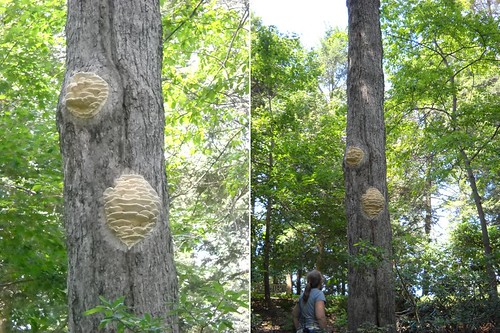

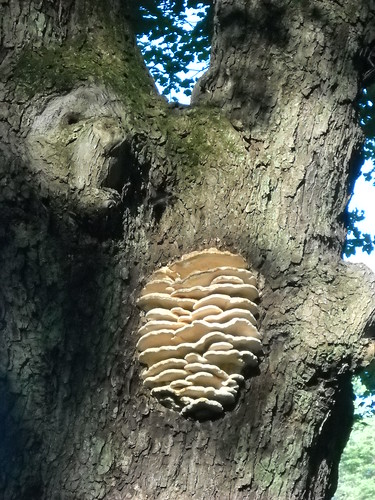
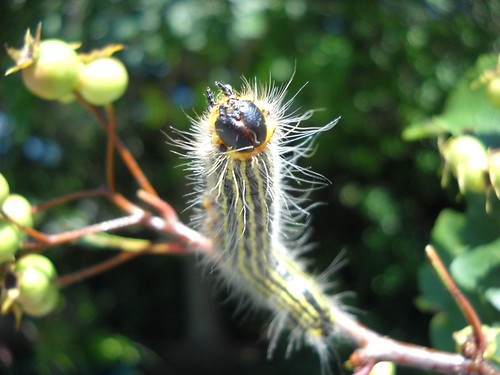
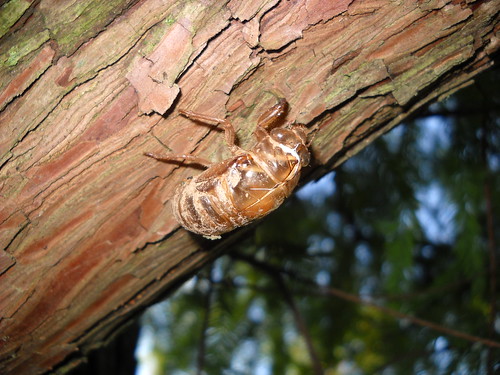
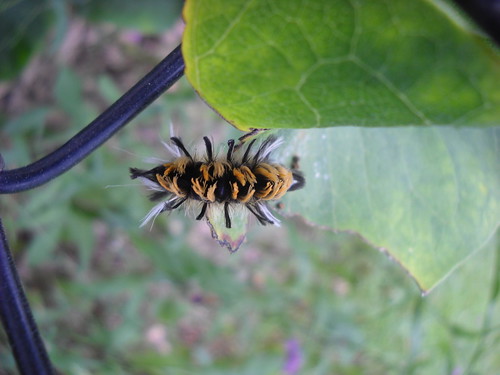

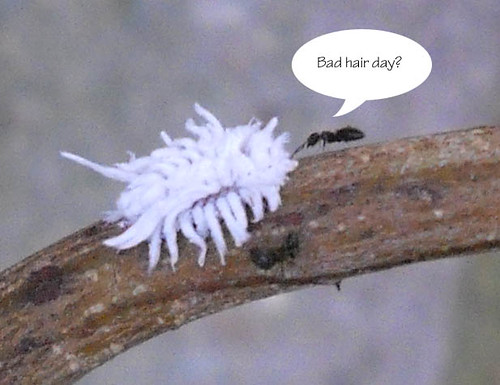




No comments:
Post a Comment